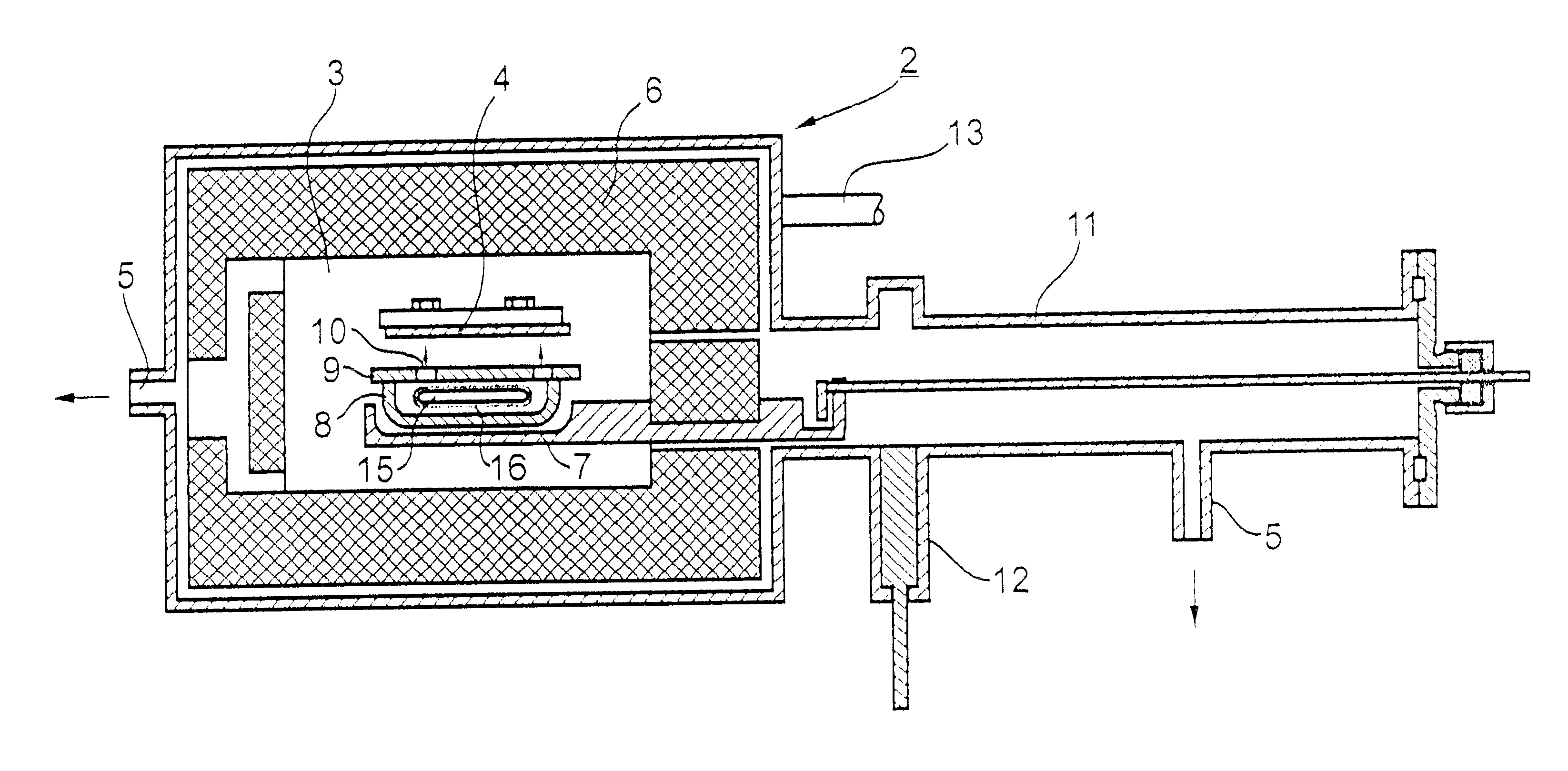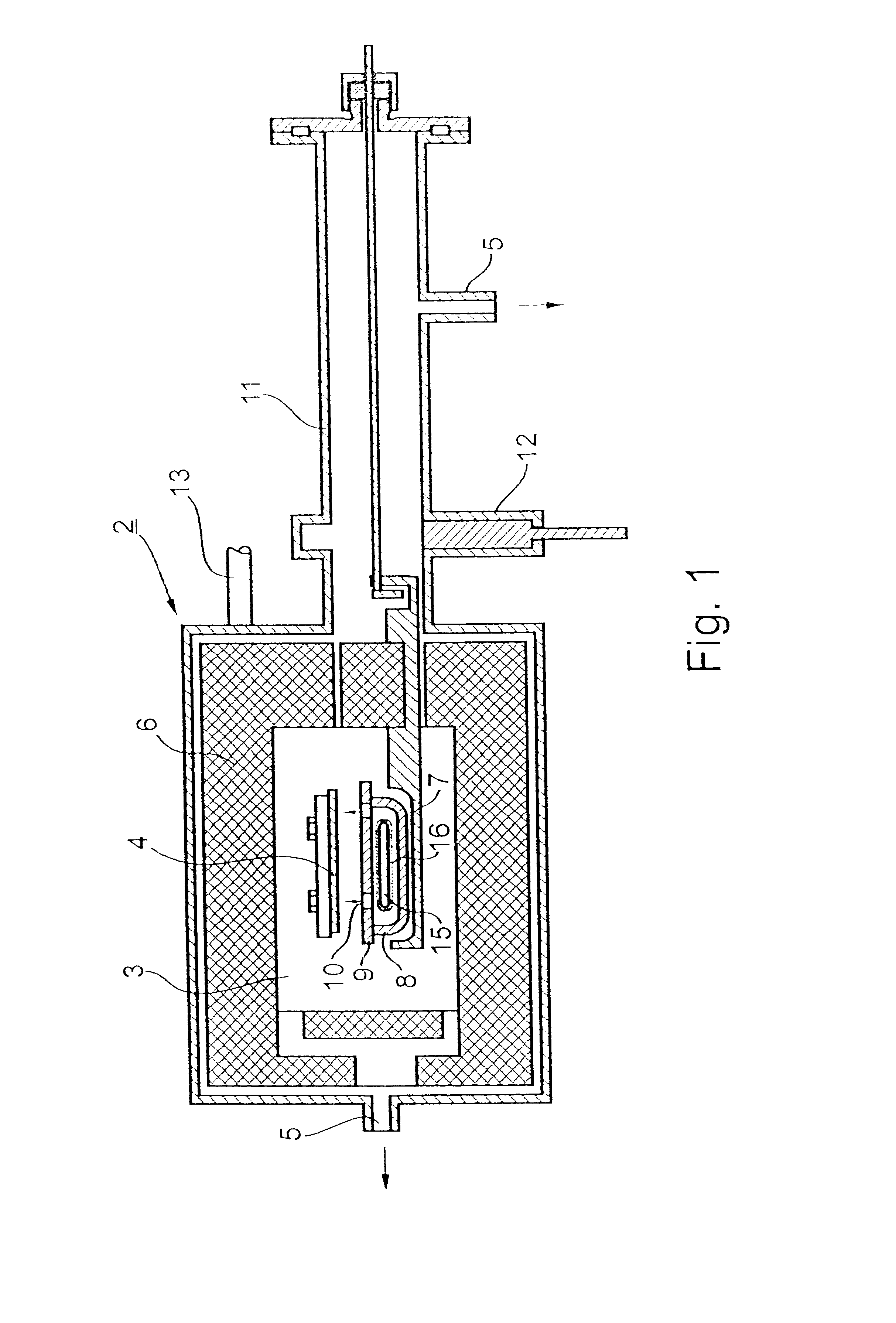Method of producing silicon carbide: heating and lighting elements
a technology of silicon carbide and heating element, which is applied in the field of new silicon carbide heating element production methods, can solve the problems of difficult to obtain the required grain size powder, serious limitations on the industrial potential of this remarkable material, and relatively expensive and time-consuming, and achieve the effect of preventing or minimizing the condensation of silicon vapors
- Summary
- Abstract
- Description
- Claims
- Application Information
AI Technical Summary
Benefits of technology
Problems solved by technology
Method used
Image
Examples
example 1
In this example, the carbon particles used for making the shaped workpiece 15 are finely-divided particles of charcoal having a particle size of 50-250 microns; and the silicon particles 11 applied over the shaped workpiece 15 are finely-divided particles of the waste of silicon wafers, both the mono-crystalline and the poly-crystalline type, resulting from the production of semiconductor devices, also ground to a fine particle size.
The initial composition preferably include 54% silicon and 46% carbon by weight, with the silicon being relatively pure but including traces of dopants, such as zinc, aluminum, and / or tellurium, in the ratio of about 1:10.sup.-6. Such dopants reduce the internal resistance of the produced silicon carbide composition.
The carbon particles are mixed in a binder of white sugar (sucrose) dissolved in soft water (one kilogram of white sugar with a few liters of water), which water was subsequently evaporated. The carbon particles are homogeneously mixed in the...
example 2
This example was the same as in Example 1, except that the finely-divided particles of carbon are mixed in a binder of polyvinyl acetate, in an amount of 0.5 kg polyvinyl acetate to one kg. of carbon, instead of the sugar solution. The process is otherwise the same as in Example 1.
example 3
This example is also the same as in Example 1, except that the sample is heated to a higher temperature of 1800.degree. C. for a shorter period of time, 30 minutes. The rest of the procedure is substantially the same as in Example 1.
PUM
| Property | Measurement | Unit |
|---|---|---|
| temperature | aaaaa | aaaaa |
| temperatures | aaaaa | aaaaa |
| time | aaaaa | aaaaa |
Abstract
Description
Claims
Application Information
 Login to View More
Login to View More - R&D
- Intellectual Property
- Life Sciences
- Materials
- Tech Scout
- Unparalleled Data Quality
- Higher Quality Content
- 60% Fewer Hallucinations
Browse by: Latest US Patents, China's latest patents, Technical Efficacy Thesaurus, Application Domain, Technology Topic, Popular Technical Reports.
© 2025 PatSnap. All rights reserved.Legal|Privacy policy|Modern Slavery Act Transparency Statement|Sitemap|About US| Contact US: help@patsnap.com



